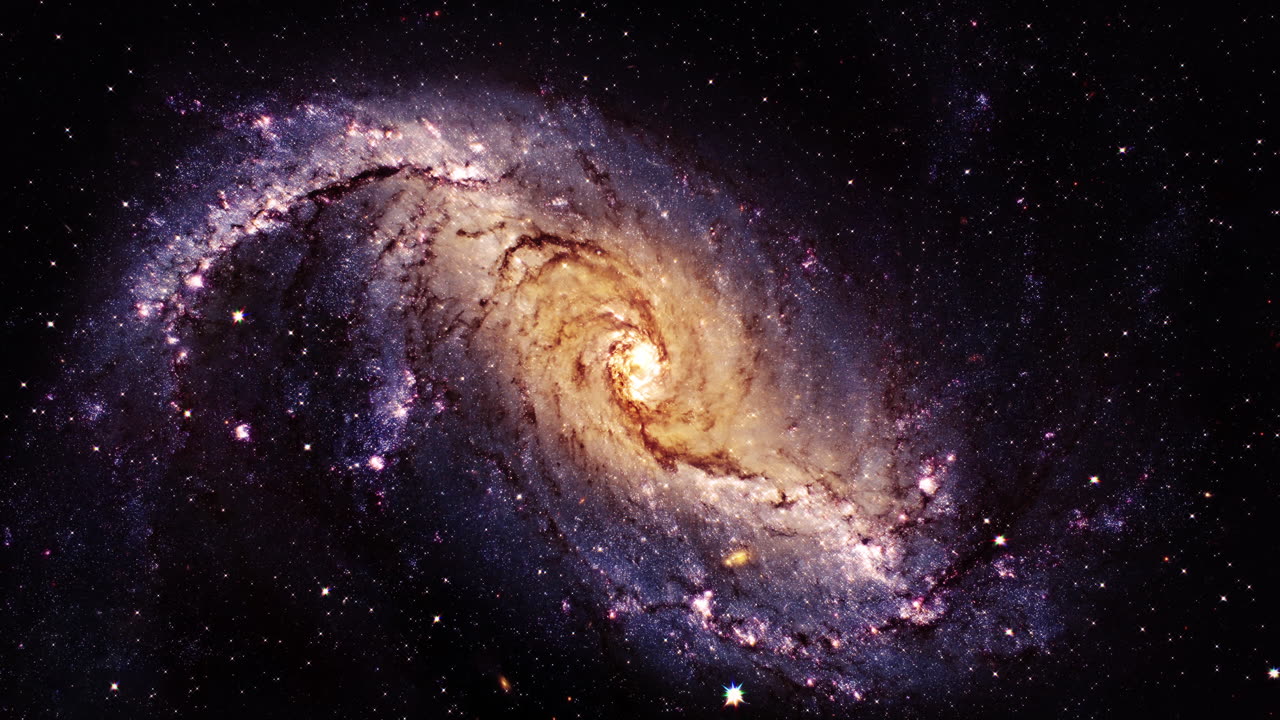Premium Only Content

Galaxy
Space nebulae are stunning cosmic formations composed of gas, dust, and various celestial elements. These captivating structures are often massive, spanning vast distances in space. They come in various shapes, sizes, and colors, each displaying its unique characteristics. Here are some key points about nebulae:
Formation: Nebulae are formed from the remnants of dying stars or through the process of star formation. When massive stars reach the end of their lifecycle and explode in a supernova, they scatter elements like hydrogen, helium, and heavier elements into space. Over time, these elements can coalesce, forming nebulae.
Types: There are different types of nebulae:
Emission Nebulae: These nebulae emit light of their own. They often appear reddish due to ionized hydrogen gas.
Reflection Nebulae: These reflect the light of nearby stars and appear bluish in color due to scattered starlight off dust particles.
Planetary Nebulae: Formed from the outer layers of dying stars, these have diverse shapes resembling planets in early telescopic views.
Dark Nebulae: Composed of dense dust, these obstruct light from passing through, creating dark patches against the background stars.
Characteristics: Nebulae can showcase mesmerizing colors due to the ionization and excitation of gases, often caused by nearby stars or intense radiation. They can take on various shapes—some appear as vast clouds, while others have intricate, filament-like structures.
Significance: Nebulae play a crucial role in the lifecycle of stars. They are the birthplaces of stars, where new stars form from the gravitational collapse of gas and dust. Additionally, they contribute to the enrichment of galaxies by releasing heavy elements into space.
Observation: Astronomers use telescopes equipped with specialized filters to capture the intricate details and colors of nebulae, revealing their beauty and providing insights into stellar evolution and the formation of celestial objects.
These cosmic wonders not only serve as captivating sights in the vastness of space but also offer valuable insights into the processes that shape the universe.
-
 LIVE
LIVE
a12cat34dog
3 hours agoMY 2ND YEAR OF GAMING ON RUMBLE :: LIVE VIDEO PREMIER :: THE ULTIMATE MONTAGE {18+}
273 watching -
 2:22:25
2:22:25
Badlands Media
1 day agoDevolution Power Hour Ep. 347: Lab Leak Limited Hangout, Flynn’s Fury, and Trump’s 4D Chessboard
122K99 -
 LIVE
LIVE
Lofi Girl
2 years agolofi hip hop radio 📚 - beats to relax/study to
1,534 watching -
 1:50:51
1:50:51
Adam Carolla
5 days ago $16.27 earnedDave Portnoy RAILS against entitled, lazy Gen-Z Workforce + Comedian Dusty Slay | Adam Carolla Show
76.4K31 -
 12:10
12:10
Talk Nerdy Sports - The Ultimate Sports Betting Podcast
8 hours ago4/20/25 - Easter Sunday Special: Vas Resurrects the Slip & Buries the Books 🧾🔥
52.9K4 -
 15:00
15:00
Mrgunsngear
23 hours ago $8.44 earnedDan Wesson DWX: 2011 & CZ-75's Baby
75.6K27 -
 16:07
16:07
SKAP ATTACK
22 hours ago $6.16 earnedNuggets STEAL Game 1 Behind Jokic Mastery
84.5K13 -
 5:31:41
5:31:41
Big Fitz Plays
10 hours agoWho Gave Me a Chainsword?! | Space Marine 2 Chaos Stream
51.7K1 -
 22:16
22:16
marcushouse
1 day ago $5.78 earnedFinally, the Starship Info We’ve Been Waiting For… And What We Can Do With It Is Wild!
68.3K37 -
 33:32
33:32
Ohio State Football and Recruiting at Buckeye Huddle
22 hours agoOhio State Football: What Position is the Biggest Question Mark for the Buckeyes?
53K2